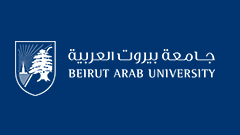Keywords
Apical extruded debris, reciprocation, full rotation, Nickle Titanium instruments, single file system.
Disciplines
Architecture | Business | Life Sciences | Medicine and Health Sciences
Abstract
Apical extrusion of infected debris into the periradicular tissues during endodontic instrumentation may lead to postoperative pain and flare-up. Debris usually contain dentine chips, necrotic pulp tissue, microorganisms and irrigant. The existing studies are inconclusive about which engine-driven system pushes less debris in the apical direction. The aim of the present study was to evaluate the amount of apically extruded debris associated with full rotation single-file nickel–titanium instrumentation systems compared to another system used in reciprocation motion. Methodology: After approval of BAU institutional review board, twenty extracted human mandibular premolar teeth were randomly assigned to two groups (n=10 per group), the root canals were instrumented according to the manufacturers’ instructions using the reciprocating single-file system Reciproc Blue (VDW), and the single-file rotary system OneCurve (MicroMega). The apically extruded debris were collected and dried in pre-weighed Eppendorf tubes. The amount of debris was assessed with a micro balance and statistically analyzed using Mann-Whitney U Test. The results showed that both systems produced debris with no statistically significant difference between them. Conclusions: Under the condition of this study, both systems caused apical debris extrusion. Reciprocal instrumentation was associated with more debris extrusion compared to rotary instrumentation, however without statistically significant difference.
Recommended Citation
Taouk, Belal; Abiad, Roula; and Abo Elsaad, Nayer
(2019)
"EVALUATION OF EXTRUDED DEBRIS AMOUNT DURING INSTRUMENTATION USING RECIPROCATION VS. FULL ROTATION TECHNIQUES: IN VITRO STUDY,"
BAU Journal - Health and Wellbeing: Vol. 2:
Iss.
1, Article 8.
DOI: https://doi.org/10.54729/2789-8288.1029
Included in
Architecture Commons, Business Commons, Life Sciences Commons, Medicine and Health Sciences Commons

